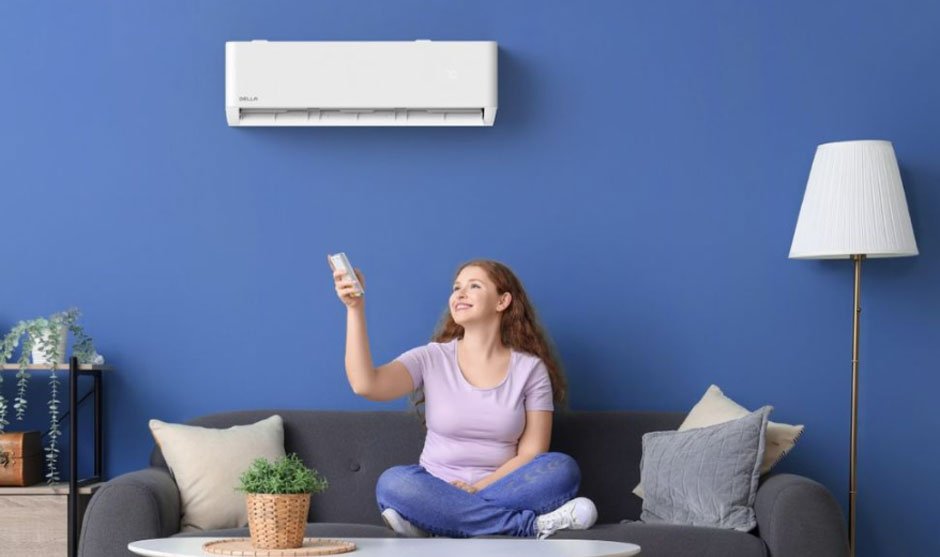Skip to the good bit
ToggleMini split AC systems are becoming increasingly popular for their energy efficiency, quiet operation, and flexibility in cooling. These systems consist of an outdoor unit and one or more indoor units, offering zoned cooling without the need for ducts. They are ideal for homes that don’t have existing ductwork or spaces where traditional systems can’t be easily installed.
As demand for energy-efficient solutions grows, the future of mini splits looks brighter with improvements in technology, sustainability, and integration with smart home systems.
Advancements in Energy Efficiency for Mini Split ACs
One of the major trends in mini split AC systems is the focus on energy efficiency. As environmental concerns grow and energy costs rise, mini split manufacturers are incorporating advanced technologies that help reduce power consumption while maintaining optimal cooling performance.
Key advancements include:
- Variable-speed Compressors: These allow mini-splits to adjust their output based on real-time cooling needs, optimizing energy use and reducing waste.
- Inverter Technology: Inverter-driven systems vary their speed according to temperature fluctuations, preventing energy waste and improving efficiency by ensuring the system doesn’t constantly turn on and off.
- Improved Insulation and Heat Exchange: Future models will feature better-insulated units and advanced heat exchangers to improve cooling performance with less energy.
These advancements will allow homeowners to enjoy consistent comfort with lower energy bills and a reduced environmental footprint.
The Rise of Smart Mini Split AC Systems
The integration of smart technology is another key trend shaping the future of mini split AC systems. Smart mini splits are becoming more common, offering users the ability to control their cooling remotely and efficiently.
Key features of smart mini splits include:
- Wi-Fi Connectivity: Control your AC from anywhere using a mobile app or smart assistant.
- Voice Control: Integration with voice assistants like Amazon Alexa and Google Assistant allows for hands-free control.
- App-Based Control: Allows for scheduling, adjusting settings, and monitoring energy use, making the units more user-friendly and convenient.
These features will make mini splits even more efficient and easy to use, allowing users to adjust settings based on daily routines and optimize their energy consumption.
Integration with Renewable Energy Sources
As renewable energy sources become more accessible and affordable, mini split systems are starting to integrate with solar power and other green energy solutions. This integration will help reduce reliance on traditional energy grids and lower cooling costs for homeowners.
Benefits of integration include:
- Solar-Powered Mini Splits: These systems will run on solar energy, reducing energy costs and making the system more eco-friendly.
- Energy Independence: By using renewable energy, homeowners can decrease their dependence on the grid and lower their overall carbon footprint.
- Smart Energy Management: Future mini splits may be able to switch between solar and grid energy based on availability and cost, providing the most efficient and sustainable option at all times.
This trend will not only make mini splits more sustainable but also align with the growing focus on environmentally responsible living.
Increased Focus on Environmental Impact and Eco-Friendly Refrigerants
The environmental impact of refrigerants used in air conditioning systems has come under scrutiny, leading to increased interest in eco-friendly alternatives. In the future, mini splits will continue to evolve by adopting refrigerants with a lower global warming potential (GWP).
Key environmental changes include:
- R-32 Refrigerant: R-32 is a more eco-friendly refrigerant with a significantly lower GWP compared to traditional refrigerants like R-22.
- Lower Emissions: Manufacturers are committed to reducing emissions from mini split systems by making them more energy-efficient and ensuring that refrigerants have a minimal impact on the environment.
- Sustainability: In addition to using eco-friendly refrigerants, mini splits will be built with materials that are more sustainable, further reducing their environmental footprint.
The future of mini split systems will focus heavily on creating more environmentally friendly units, helping reduce the overall carbon footprint.
The Future of Maintenance: Self-Diagnosing and Remote Monitoring Systems
As mini split technology advances, so too does the ability to monitor and maintain these systems. Future mini splits will be equipped with self-diagnosing capabilities, enabling users or technicians to troubleshoot issues before they become significant problems.
Innovations in maintenance include:
- Self-Diagnosis: Mini splits will be able to alert users when there is an issue, reducing the need for regular service calls.
- Remote Monitoring: Technicians will be able to monitor system performance remotely and make adjustments without needing to visit the site.
- Predictive Maintenance: By using sensors and AI, mini splits will predict when parts need replacement or service, preventing downtime and improving system longevity.
These advancements will reduce maintenance costs and increase the reliability and lifespan of mini split systems.
Conclusion
The future of mini split AC systems is exciting, with advancements in energy efficiency, smart technology, and environmental responsibility shaping their development. As homeowners continue to prioritize sustainability, mini split systems will become even more eco-friendly, efficient, and integrated with renewable energy sources. With improvements in maintenance technologies and self-diagnosing systems, mini splits will be easier to manage and more reliable than ever. Whether you’re looking for better energy savings, smarter control, or environmentally friendly cooling, the future of mini split HVAC holds great promise.







